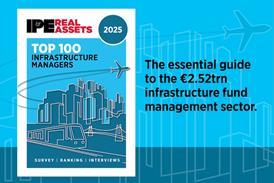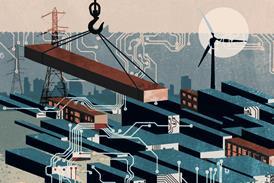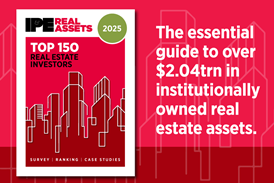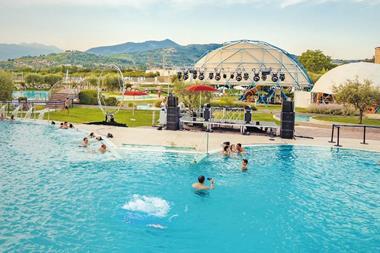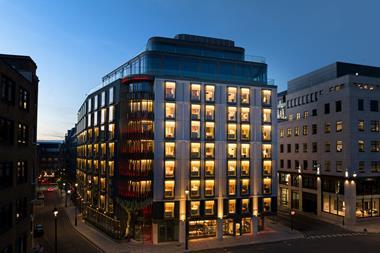Amsterdam-based Edge is targeting the Big League of developers by joining forces with Australian property giant Macquarie Asset Management.
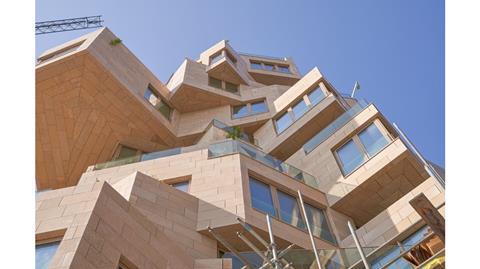
As Europe’s largest property trade fair Mipim gears up to stage its first full-scale event in two years, one attendee will be looking forward to it perhaps more than most: Coen van Oostrom, founder and CEO of developer Edge. ‘After months of working with numbers, I mainly want to get inspired, pick up new trends, meet great architects,’ he says.
Van Oostrom has spent the past nine months working in total secrecy on the search for a new strategic partner for his company with his team, investment bank Lazard and lender ABN Amro. The decision to bring in an outside partner marks a major change in direction for the property veteran, who has led his development company, OVG Real Estate, now rebranded into Edge, with a firm grip for the past 25 years.
‘We want to do more than we have been able to do up until today: we want to go to Paris, Stockholm and Milan, we want to compete with the likes of Tishman Speyer, Hines and Blackstone. That was not possible before, but it will be now thanks to our new strategic partner Macquarie,’ Van Oostrom tells PropertyEU in an interview.
Success story
Under Van Oostrom’s leadership, Edge has carved out a niche for itself as the most sustainable office developer in Europe. The firm’s new generation of ultra-sustainable and tech-enabled buildings has seduced investors and garnered awards at a time when the market is waking up to the need for climate-friendly real estate.
Most recently, the developer has stunned the architectural world with its mixed-use ‘Valley’ project in Amsterdam, creating a new landmark for the city’s central business district, Zuidas. Meanwhile, Dutch pension fund giant APG is in the process of moving into Edge Amsterdam West, an office complex that is breathing new life into a once desolate office area of the city. Edge offices have also been launched in London, Germany and the US (Boston) for a total development pipeline of €5 bn.
Explains Van Oostrom: ‘You could say that we are a boutique developer of sustainable offices. However, the scale of Tishman Speyer, Hines and Blackstone is quite different. You need a different capital structure for that. We are profitable, but have a relatively small balance sheet.’
Although Edge has maintained good relations with Dutch banks ABN Amro, Rabobank and ING Real Estate over the years, even they could not satisfy its financing needs. As a result, a series of joint ventures was set up with the Koreans (Hana Alternative Asset Management), Americans (the American teachers' pension fund TIAA), and in January this year with Goldman Sachs and Japanese developer Mitsui Fudosan in the UK.
Name change
Van Oostrom admits that the new name Edge was also inspired by the financing issue. ‘We wanted to position Edge as a technology company because we know that developers generally struggle to tap the capital markets. However, we can now conclude that the market did not go for that tech model. That is why we subsequently created two different units, Edge and Edge Next. The first is our traditional development company. The second is a technology company that integrates data from IOT sensors and building management systems to give companies relevant insights into energy usage, building occupancy and tenants’ wellbeing, which can be integrated into every building we develop with Edge. To make the development arm future-proof, we need an equity partner.’
He continues: ‘We deliver many high-profile buildings, but because of our relatively small balance sheet, we are forced to sell all these buildings quickly. That is why we asked Lazard nine months ago to come up with potential investment partners that could strengthen our balance sheet.’
Although Australia’s Macquarie Asset Management was no stranger to Edge, personal contact was not the reason why the Australians emerged as the most ideal candidate. ‘No, it was not a personal decision, but a business one,’ Van Oostrom explains. ‘We looked at whether the asset manager was interested in sustainability. Of course we could have decided on the basis of short-term profit maximization, but actually that was less important for us.’
And so it happened that in early February, Macquarie announced it was taking a ‘significant’ minority stake in Edge, thereby marking the start of a new journey for the Dutch office development group and, possibly, the advance of high-tech sustainable buildings in Europe.
Van Oostrom says the firm plans to spend the coming months drawing up a long-term plan ‘whereby everything is possible, yes even potentially going public on the stock exchange’.
Such a move would mirror that of another Dutch developer, CTP, which last year made a splash by raising €854 mln in Europe’s largest property IPO in years.
In any case, gaining access to vast resources of capital – Macquarie has €479 bn of AUM - also comes with a downside; namely the risk of losing focus. 'I recognize the danger of too many resources,’ Van Oostrom admits. ‘We will try to stick to our guiding principle: “the world needs better buildings”. We want to create more high-quality offices and mixed-use buildings like Valley. We’re already doing that in the Netherlands, Germany and UK, but we also want to be active in Stockholm, Paris and Milan. We were too small to be able to do that before, also because we always have to take part in tenders to develop such high-profile buildings. Thanks to Macquarie, we no longer have to sell our office schemes directly, but we can place these buildings in fund structures, allowing us to take better advantage of them in the long term.’
'Branding' of buildings
Over the past couple of years, Edge offices have led the way for green high-tech buildings in Europe. While the company is certainly not the first to use the ‘branding’ technique – the best example of ‘branding’ in real estate is possibly Westfield’s shopping centres, which have become synonymous for shopping in Australia - Van Oostrom is looking to expand this concept to the mixed-use space with the launch of Valley.
In future, he hopes this new ‘brand’ will be emblematic for a combination of modern housing, offices and retail space, such as has been created in the Amsterdam development.
Van Oostrom concludes: ‘Despite a few uncertainties – rising construction costs are indeed a problem - I think now is a fantastic time for us. I am convinced of the demand for offices, at least the way we want to make them. You have no idea how many out-of-date offices there are. Take the office situation in London City. With the exception of the Google complex, it’s dire. Companies want to comply with the goals set under the Paris Agreement and are grappling with the war for talent. That requires buildings that are sustainable, accessible and healthy, but I estimate that 90% of existing buildings don’t fit that bill. Thanks to our partnership with Macquarie, we can certainly make a difference on that front.’
